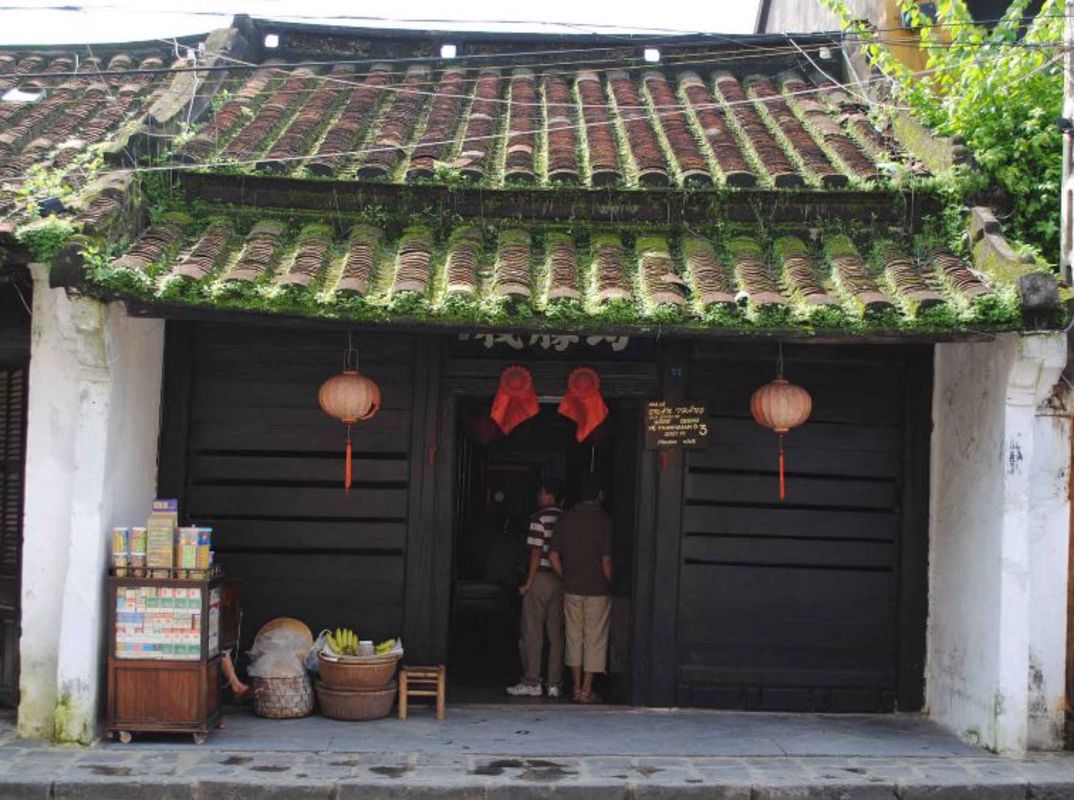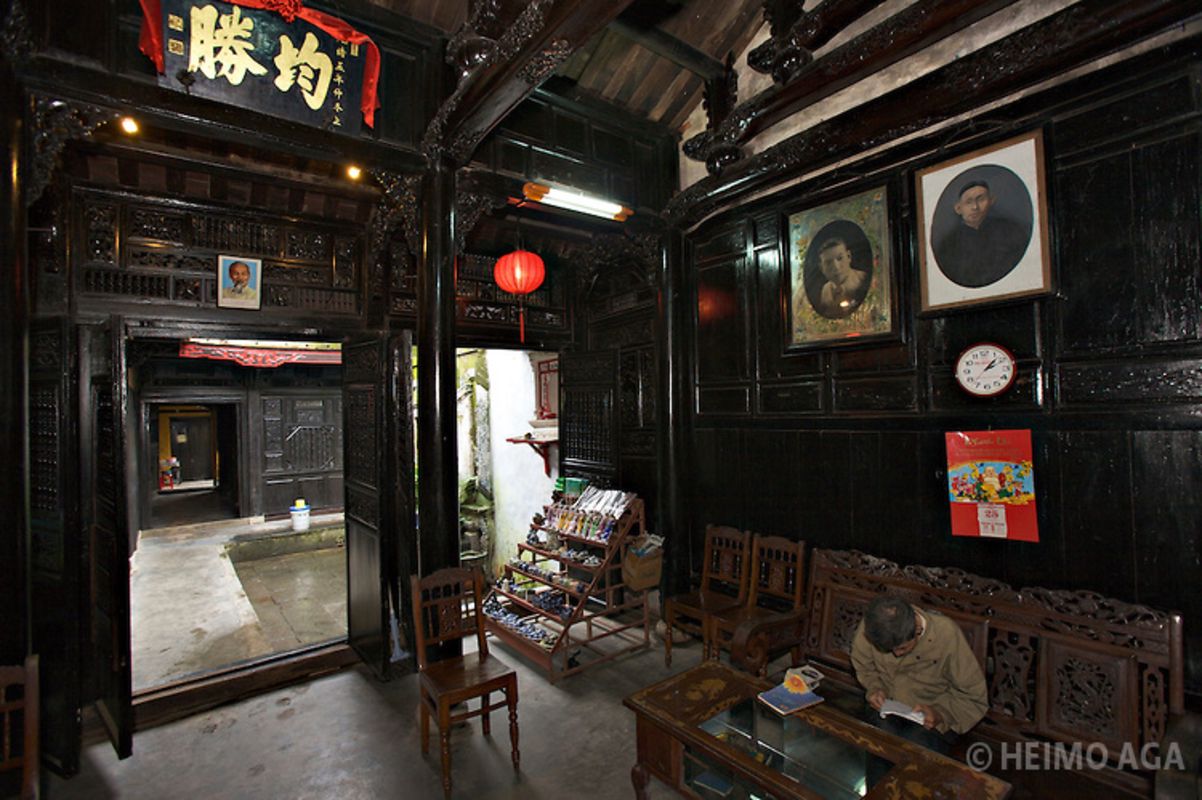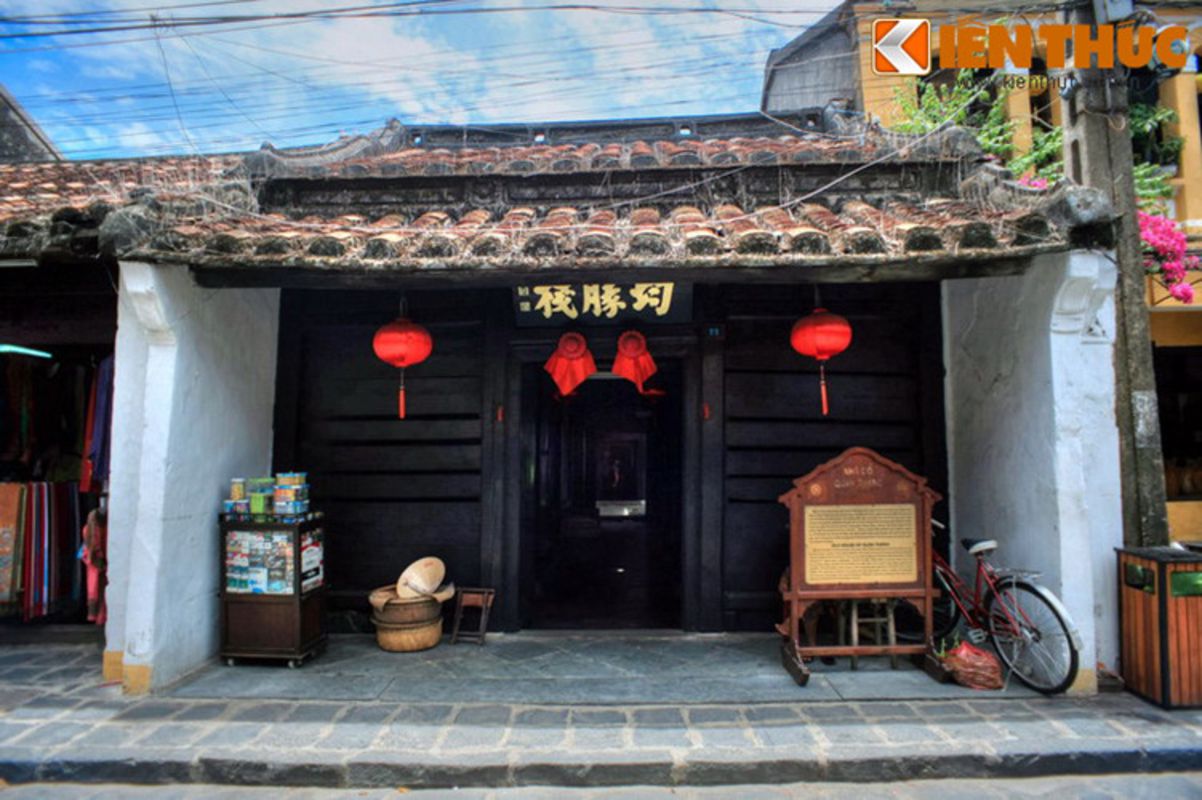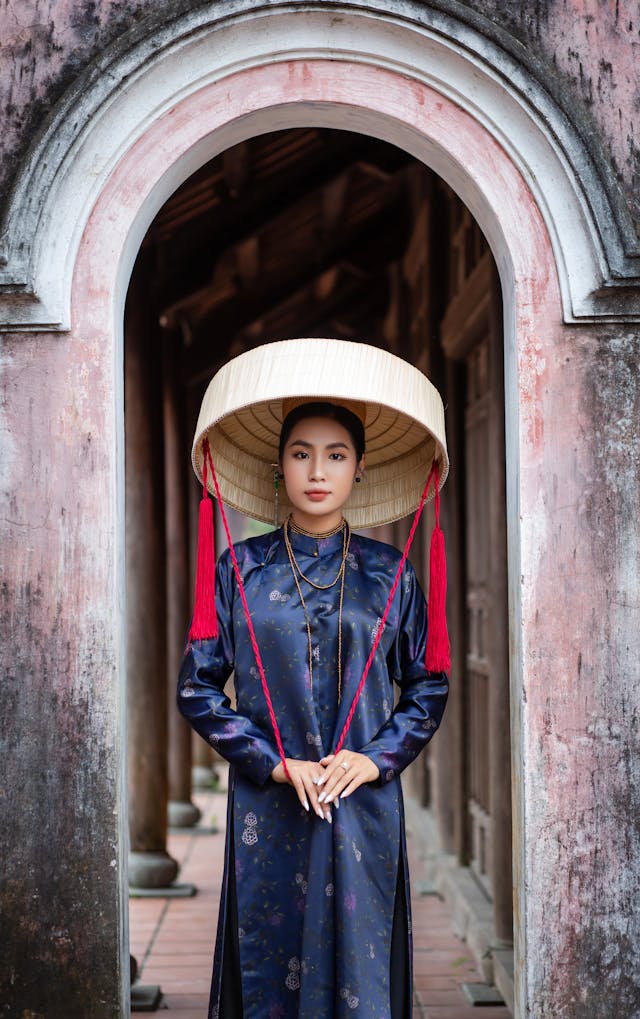Discover Quan Thang Ancient House in Hoi An, Da Nang City! Explore its 18th-century architecture, rich history, tour prices, and sustainable travel tips for a UNESCO cultural experience. Book your tour today!
Hoi An Ancient Town, now a ward of Da Nang City following the merger of Quang Nam Province, is a UNESCO World Heritage Site renowned for its well-preserved 15th–19th-century architecture and vibrant cultural heritage. Nestled at 77 Tran Phu Street in Minh An Ward, Quan Thang Ancient House is a captivating example of Hoi An’s historic merchant homes, attracting thousands of the town’s 4.5 million annual visitors. Built in the late 17th to early 18th century by a Chinese merchant named Quan Thang, this 300-square-meter residence showcases a blend of Chinese Huaxia and Vietnamese architectural styles, preserved for over three centuries. With its intricate wood carvings, serene sky yard, and antique furnishings, the house offers a glimpse into the prosperous lives of Hoi An’s trading elite. Legend Travel Group, a leader in sustainable tourism, curates eco-friendly tours to immerse you in this cultural treasure, bookable via links throughout this guide. Step into Hoi An’s storied past—reserve your tour now!
Legend Travel Group delivers authentic Southeast Asia experiences, prioritizing sustainability and cultural preservation. Our Hoi An tours feature low-impact transport like bicycles and walking routes, guided by local experts who share the house’s historical significance. We support Minh An’s community and align with Da Nang City’s “Heritage for Future” initiative to protect sites like Quan Thang Ancient House. With transparent pricing, free cancellations up to 48 hours before departure, and 24/7 support, we ensure a seamless cultural journey. Explore Quan Thang responsibly with our curated tours—book via the links on this page!
Quan Thang Ancient House, constructed around the late 17th to early 18th century, is one of Hoi An’s oldest and most beautifully preserved merchant residences, reflecting the town’s golden era as a Southeast Asian trading port. Named after its original owner, a Chinese merchant and captain, the house served as both a trading hub and family home, connecting Tran Phu Street at the front for commerce and Nguyen Thai Hoc Street at the back for riverfront trade along the Thu Bon River. Spanning 300 square meters, this single-story, tube-shaped house is a masterpiece of Chinese Huaxia architecture, adapted to Hoi An’s tropical climate with Vietnamese elements like crab-shell roofs and a sky yard for ventilation. Its wooden framework, crafted by artisans from Kim Bong Carpentry Village, features lively carvings of mythical creatures and floral motifs, while Chinese porcelain wall decorations and antique furnishings highlight the merchant class’s wealth. Preserved by descendants, the house remains a living testament to Hoi An’s multicultural history, recognized as part of its UNESCO World Heritage status since 1999.
The house is divided into three main compartments:
Trading Space: Two large wooden stalls at the front displayed goods, reflecting its commercial role.
Living Space: A central living room, kitchen, and family quarters surround a sky yard with a rockery, aquarium, and greenery, providing natural light and cooling.
Worship Space: A sacred area for ancestor worship, adorned with intricate altars and antiques, underscores the family’s spiritual traditions.
Despite claims of being over 150 years old in some sources, recent research suggests a late 17th-century origin, aligning with Hoi An’s trading peak, though its terrace-style connection to neighboring houses raises questions about precise dating. The house’s enduring integrity, with minimal modern alterations, makes it a vital cultural artifact.
 Photograph the timeless allure of Da Nang’s heritage (Source: Internet)
Photograph the timeless allure of Da Nang’s heritage (Source: Internet)Quang Nam Province has merged into Da Nang City, making Hoi An a ward under Da Nang City’s administration. This restructuring eliminates the district level, but Quan Thang Ancient House’s UNESCO status within Hoi An Ancient Town remains intact. Da Nang City aims to promote Hoi An as a “Global Cultural Ward,” enhancing sustainable tourism with improved pedestrian pathways and eco-friendly infrastructure.
 Experience Da Nang Tours with sustainable exploration (Source: Internet)
Experience Da Nang Tours with sustainable exploration (Source: Internet)Explore the house’s Chinese Huaxia style, featuring crab-shell roofs, a sky yard with Chinese porcelain wall decorations, and Kim Bong Village’s intricate wood carvings of dragons, bats, and pomegranates, symbolizing prosperity. The teak walls and bluestone pillars highlight its durability.
Cost: Included in Hoi An Ancient Town ticket ($6/adult, 150,000 VND; covers 5 of 21 attractions); $4 (100,000 VND) for Vietnamese visitors; free for children under 16.
Highlights: “A masterpiece of Oriental design” (Tripadvisor, 4.6/5 stars).
Tip: Visit mid-morning (8:00–10:00 AM) for fewer crowds; allow 10–15 minutes to explore. Included in our Hoi An Heritage Tour ($70–$90).
View preserved antiques, including lacquered boards, Chinese calligraphy, porcelain vases, and wooden furniture, offering insights into the merchant lifestyle of 18th-century Hoi An. Informational plaques detail the house’s trading history.
Cost: Included in Ancient Town ticket ($6).
Highlights: “A living time capsule” (Vietnam Tourism).
Tip: No photography in worship areas; use QR codes for digital artifact guides. Included in our Hoi An Cultural Tour ($75–$95).
Hear stories from local guides or descendants about Quan Thang’s role as a trading hub, connecting Hoi An’s port to Chinese and global markets, and the family’s daily routines in this prosperous era.
Cost: Guided tours $15–$40 (375,000–1,000,000 VND); private tours $80–$120 (2,000,000–3,000,000 VND).
Highlights: “Fascinating historical insights” (Tripadvisor, 4.7/5 stars).
Tip: Book tours with Legend Travel Group for cultural depth; combine with Tan Ky House (300 m away). Included in our Hoi An Heritage Tour ($70–$90).
Observe the house’s Feng Shui principles, with the sky yard balancing air and light, and symbolic carvings like bats for happiness and pomegranates for fertility, designed to bring harmony and wealth.
Cost: Included in Ancient Town ticket ($6).
Highlights: “A lesson in cultural harmony” (Vietnam Tourism).
Tip: Ask guides about Feng Shui symbolism; avoid touching carvings. Included in our Hoi An Cultural Tour ($75–$95).
Browse silk clothing, lanterns, and pottery at shops along Tran Phu Street, supporting local artisans and complementing your cultural visit.
Cost: Items $2–$20 (50,000–500,000 VND).
Highlights: “Authentic Hoi An crafts” (Tripadvisor, 4.5/5 stars).
Tip: Bargain politely; prioritize eco-friendly vendors like Yaly Couture. Included in our Hoi An Artisan Tour ($70–$90).
 Start your Da Nang Travel with serene vibes (Source: Internet)
Start your Da Nang Travel with serene vibes (Source: Internet)Quan Thang Ancient House’s preservation is vital to Hoi An’s UNESCO heritage, supported by Da Nang City’s sustainable tourism initiatives:
Community Stewardship: Descendants and the Hoi An Center for Cultural Heritage Management maintain the house, ensuring its authenticity despite annual flooding risks, managed through UNESCO’s Master Plan.
Eco-Friendly Practices: Tours use bicycles or walking to reduce emissions; nearby vendors adopt biodegradable packaging to minimize waste.
Cultural Education: Guided tours and signage educate visitors on Chinese-Vietnamese heritage, fostering respect for Hoi An’s multicultural legacy.
Legend Travel Group’s tours align with these efforts, partnering with local guides and eco-conscious vendors to support Minh An’s community and promote sustainable tourism, ensuring Quan Thang’s legacy endures.
 Vietnamese girl - Hoi An Ancient Town (Source: Internet)
Vietnamese girl - Hoi An Ancient Town (Source: Internet)Entrance Fee: Included in Hoi An Ancient Town ticket ($6/adult, 150,000 VND; $4, 100,000 VND for Vietnamese visitors; free for children under 16). Covers 5 attractions.
Activities: Guided tours $15–$40 (375,000–1,000,000 VND); private tours $80–$120 (2,000,000–3,000,000 VND); souvenirs $2–$20 (50,000–500,000 VND); tips $1–$2 (25,000–50,000 VND).
Dining: Nearby street food (e.g., cao lầu, mi quang) $1–$6 (25,000–150,000 VND); restaurant meals $3–$15 (75,000–375,000 VND); drinks $0.25–$4 (6,250–100,000 VND).
Transport:
From Hanoi (750 km, round-trip): Flight $70–$140; train $35–$60 + $6–$12 taxi; bus $20–$35 + $6–$12 taxi; private car $160–$230.
From Ho Chi Minh City (900 km, round-trip): Flight $80–$160; bus $30–$45 + $6–$12 taxi; private car $200–$280.
From Da Nang (30 km, ~30–45 minutes, round-trip): Taxi/Grab $14–$22; shuttle bus $6–$10; bus #1 $0.30–$1.20 (8,000–30,000 VND); motorbike $6–$10/day + $4 fuel.
Within Hoi An (1–2 km): Bicycle $2–$4/day; motorbike $6–$10/day (restricted in Old Town pedestrian zones 9:00 AM–11:00 AM, 3:00 PM–10:00 PM); taxi/Grab $3–$6/trip; cyclo $2–$5/trip (50,000–125,000 VND); walking free.
Accommodation: Hostels $10–$25/night (250,000–625,000 VND); homestays $15–$50/night (375,000–1,250,000 VND); hotels $70–$200/night (1,750,000–5,000,000 VND); resorts $180–$450/night (4,500,000–11,250,000 VND).
Total Daily Cost: $20–$120 (budget: $20–$50; mid-range: $50–$80; luxury: $80–$120).
Tip: Use VND; ATMs in Hoi An Ward (Vietcombank, BIDV). Book tours for eco-transfers to reduce carbon footprint. Rainy season (September–January) offers 10–20% discounts.
Flight: $35–$70 one-way to Da Nang International Airport; 45-minute taxi ($14–$22) to Hoi An.
Train: $17–$30 one-way to Da Nang Station; 30-minute taxi ($12–$18).
Bus: $10–$17 one-way to Da Nang; 30-minute taxi ($12–$18).
Private Car: $80–$115 one-way.
Guided Tour: Our tours ($100–$200) include eco-transfers.
Flight: $40–$80 one-way to Da Nang; 45-minute taxi ($14–$22).
Bus: $15–$22 one-way to Da Nang; 30-minute taxi ($12–$18).
Private Car: $100–$140 one-way.
Guided Tour: Our tours ($120–$220) include transfers.
Bus #1: $0.30–$1.20 (8,000–30,000 VND); every 30 minutes (5:30 AM–5:00 PM) to Hoi An Bus Station; 10-minute walk to house.
Taxi/Grab: $7–$11 one-way.
Shuttle Bus: $3–$5 one-way; hourly (6:00 AM–9:00 PM).
Motorbike: $6–$10/day + $2 fuel; restricted in Old Town pedestrian zones.
Guided Tour: Our half-day tours ($55–$75) include transfers.
Bicycle: $2–$4/day; ideal for Tran Phu Street.
Cyclo: $2–$5/trip (50,000–125,000 VND); cultural experience.
Taxi/Grab: $3–$6/trip.
Walking: Free; 5-minute walk from Japanese Covered Bridge (200 m).
Route Tip: Base yourself in Hoi An Ward; Quan Thang is walkable from Hoi An Market or Chua Cau. Use offline maps (e.g., Maps.me). Parking: $0.25–$0.60/motorbike (6,250–15,000 VND) outside pedestrian zones.
Spring (February–April): Mild (18–28°C or 64.4–82.4°F), low rainfall (25–50 mm). Ideal for walking tours and photography in the sky yard; book 2–3 weeks ahead for Nguyen Tieu Festival (February).
Summer (May–August): Warm (25–38°C or 77–100.4°F), occasional showers (90–120 mm). Early visits (6:00–9:00 AM) avoid heat; peak season, so book early.
Rainy Season (September–January): Cooler (19–29°C or 66.2–84.2°F), heavy rain (150–500 mm, peaking October–November). Indoor exploration ideal; 10–20% discounts. Check flood forecasts for November, as Tran Phu Street may flood.
Tip: February–April offers the best weather for exploring Hoi An’s streets; rainy season provides a cozy ambiance for indoor cultural visits.
Plan Ahead: Book tours 2–3 weeks in advance via Legend Travel Group or Klook (+84 938 987 654). Confirm hours (8:00 AM–6:00 PM). Maximum capacity is 30–40 visitors, so large groups may wait during peak hours (10:00 AM–2:00 PM).
Dress Code: Modest attire (covered shoulders, knees) to respect the worship space; comfortable shoes for walking Tran Phu Street.
Pack Smart: Reusable water bottle, small cash (VND) for tickets/souvenirs, camera (no photos in worship areas), mosquito repellent for sky yard.
Budget Wisely: Expect $20–$120/day; carry VND; ATMs in Hoi An Ward. Verify prices to avoid overcharges.
Stay Safe: Watch for uneven floors; secure valuables in crowded areas; avoid touching antiques or carvings. Check flood risks in November.
Sustainability: Use bicycles or walk to reduce emissions; buy from local artisans; avoid plastic waste. Our tours promote eco-conscious travel.
Cultural Respect: Maintain silence in worship areas; don’t move furniture; tip guides ($1–$2). Ask permission before photographing interiors.
Navigation: Allow 10–15 minutes for the house; combine with Cantonese Assembly Hall (200 m) or Hoi An Market (500 m) for a half-day itinerary. Offline maps essential.
Our sustainable tours immerse you in Hoi An’s cultural heritage, with Quan Thang Ancient House as a highlight:
Hoi An Heritage Tour ($70–$90/person): Quan Thang Ancient House, Japanese Covered Bridge, Phuc Kien Assembly Hall, mi quang tasting. Includes eco-transfers and lunch.
Hoi An Cultural Tour ($75–$95/person): Quan Thang Ancient House, Tan Ky House, Kim Bong Carpentry Village, lantern-making workshop. Includes eco-transfers and snacks.
Hoi An Artisan Tour ($70–$90/person): Quan Thang Ancient House, Yaly Couture tailoring, Hoi An Market handicrafts. Includes eco-transfers and souvenirs.
Hoi An Foodie Adventure ($60–$80/person): Quan Thang Ancient House, Hoi An Market, cao lầu at Morning Glory. Includes eco-transfers and tastings.
Hoi An Cultural Explorer ($350–$550/person, 3–4 days): Quan Thang Ancient House, My Son Sanctuary, homestays ($15–$50/night), all Hoi An highlights. Includes all activities, meals, eco-transfers.
Prices include English-speaking guides, eco-transfers, entrance fees, and meals/snacks. Group discounts (10% off for 10+ travelers) and seasonal promotions available. Book now via links around this page!
Quan Thang Ancient House, a cultural jewel in Hoi An Ancient Town within Da Nang City, captivates with its late 17th-century Chinese-Vietnamese architecture and rich merchant history. From its Kim Bong wood carvings to its serene sky yard, this UNESCO-recognized residence offers a profound connection to Hoi An’s trading port legacy. Preserved for over three centuries, it stands as a testament to the town’s multicultural past. Legend Travel Group’s Da Nang Tours guide you through this historic gem, ensuring a sustainable Da Nang Travel experience that supports local preservation and eco-conscious practices. Don’t miss Quan Thang’s timeless allure—browse our featured tours and book your Hoi An adventure today!
Ready to uncover Quan Thang Ancient House’s cultural treasures? Reserve your tour with Legend Travel Group and immerse yourself in Vietnam’s heritage!
Author Bio: Written by Tony Bùi, with over 20 years of experience in the travel industry, guiding 100,000+ travellers across Southeast Asia. This guide draws from firsthand insights, guest feedback from Legend Travel Group surveys.
Favorite experiences booked by travelers